This Monday December 18, we will meet in person.
Go to calendar for our schedule
Address for OHMC meditation space:
3812 Northampton St. NW, Washington DC 20015
Please arrive a few minutes early so we can invite the bell on time. You may also arrive 15 minutes early to practice working meditation by helping us set up cushions.
Dear friends, This week Annie and Andy will co-facilitate and we will meet Monday evening in person at our meditation space (3812 Northampton Street NW) from 7-8:30PM EST, Wednesday morning online from 7-8AM, and Friday online from 12-1PM EST.
We will reflect on one of the central understandings of Thich Nhat Hanh’s (Thay) teachings, Interbeing. This is a word that Thay created to reflect his insight that nothing can exist by itself. We depend upon everything else to be, or rather, to interbe.
This simple - but not easy - insight is the foundation for our practice. If we really know that we are a single cell in the cosmos, not a separate and lonely creature, we will live with more ease and feel greater belonging to all of life. Knowing that we interare releases our need to run after external things because we realize that we already have, and in fact are, everything we need.
In his book, Peace is Every Step, Thay defines what Interbeing is:
“If you are a poet, you will see clearly that there is a cloud floating in this sheet of paper. Without a cloud, there will be no rain; without rain, the trees cannot grow; and without trees, we cannot make paper. The cloud is essential for the paper to exist. If the cloud is not here, the sheet of paper cannot be here either. So we can say that the cloud and the paper inter-are. “Interbeing” is a word that is not in the dictionary yet, but if we combine the prefix “inter-” with the verb “to be,” we have a new verb, inter-be. Without a cloud and the sheet of paper inter-are.
If we look into this sheet of paper even more deeply, we can see the sunshine in it. If the sunshine is not there, the forest cannot grow. In fact, nothing can grow. Even we cannot grow without sunshine. And so, we know that the sunshine is also in this sheet of paper. The paper and the sunshine inter-are. And if we continue to look, we can see the logger who cut the tree and brought it to the mill to be transformed into paper. And we see the wheat. We know the logger cannot exist without his daily bread, and therefore the wheat that became his bread is also in this sheet of paper. And the logger’s father and mother are in it too. When we look in this way, we see that without all of these things, this sheet of paper cannot exist.
Looking even more deeply, we can see we are in it too. This is not difficult to see, because when we look at a sheet of paper, the sheet of paper is part of our perception. Your mind is in here and mine is also. So we can say that everything is in here with this sheet of paper. You cannot point out one thing that is not here-time, space, the earth, the rain, the minerals in the soil, the sunshine, the cloud, the river, the heat. Everything co-exists with this sheet of paper. That is why I think the word inter-be should be in the dictionary. “To be” is to inter-be. You cannot just be by yourself alone. You have to inter-be with every other thing. This sheet of paper is, because everything else is.
Suppose we try to return one of the elements to its source. Suppose we return the sunshine to the sun. Do you think that this sheet of paper will be possible? No, without sunshine nothing can be. And if we return the logger to his mother, then we have no sheet of paper either. The fact is that this sheet of paper is made up only of “non-paper elements.” And if we return these non-paper elements to their sources, then there can be no paper at all. Without “non-paper elements,” like mind, logger, sunshine and so on, there will be no paper. As thin as this sheet of paper is, it contains everything in the universe in it.”
Organizer Adaku Utah writes about interbeing in the context of the mycelium (mushroom) network. Adaku recognizes that our interbeing nature, like that of the mycelium, requires trust and sharing of resources encourage all of us to bloom:
“This mycelial network cannot exist without trust. The mycelium communication highway recognizes and believes in the collective ability to channel and receive nutrients where needed, protect against parasites, and expand roots into necessary sites of growth. The network process also fosters intergenerational relationships that welcome the myriad of ancient wisdom and connections that reside in older trees to benefit younger trees. These mushrooms affirm a commitment to building relationships of trust that encourage all life to bloom.”
And In How to Love, Thay shares the impact of Interbeing on our relationships:
“We can’t exist by ourselves alone. We can only inter-be. I am made only of non-me elements, such as the Earth, the sun, parents, and ancestors. In a relationship, if you can see the nature of interbeing between you and the other person, you can see that his suffering is your own suffering, and your happiness is his own happiness. With this way of seeing, you speak and act differently. This in itself can relieve so much suffering.”
This week we will read these three excerpts together and reflect on our understanding of Interbeing and consider how we might practice to have more moments when we deeply know that interbeing is our true nature.
We look forward to being together.
Warmly,
Andy & Annie.

